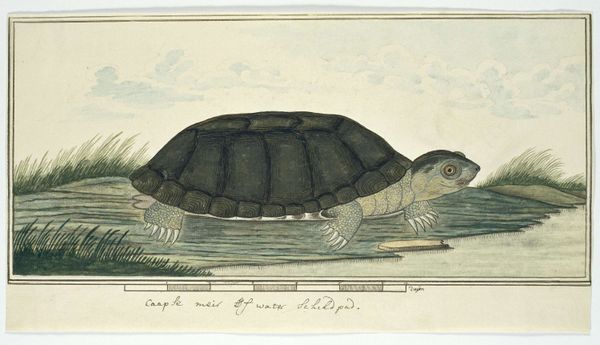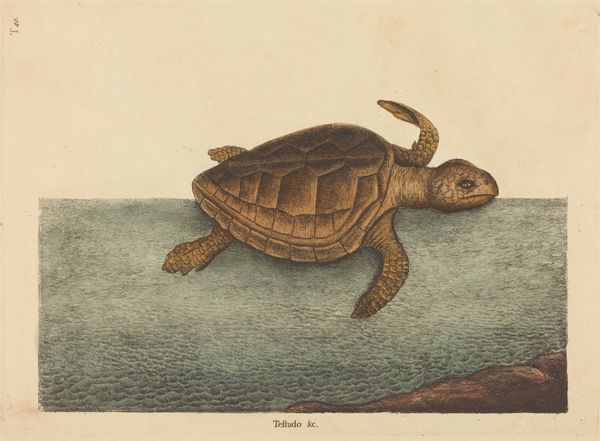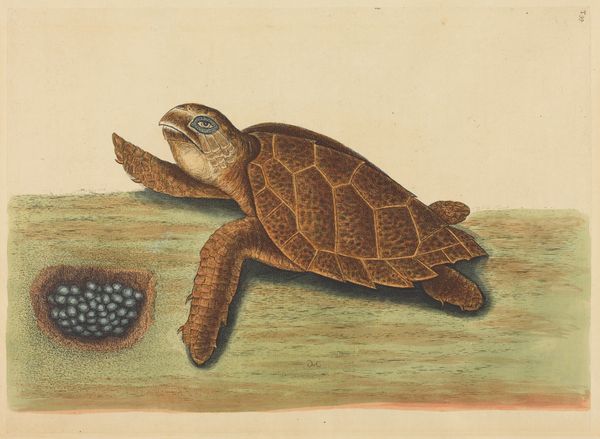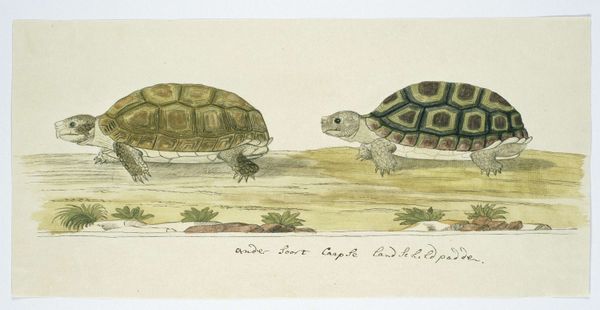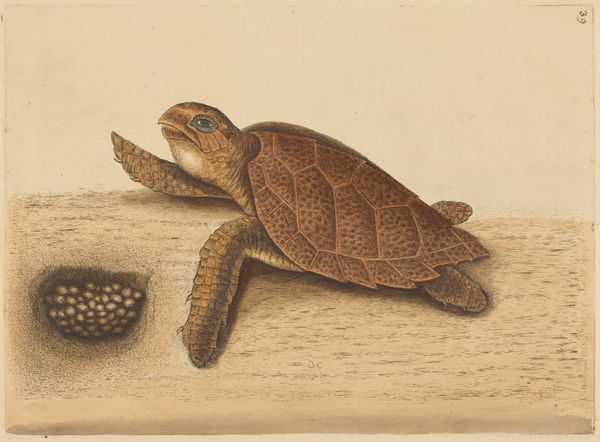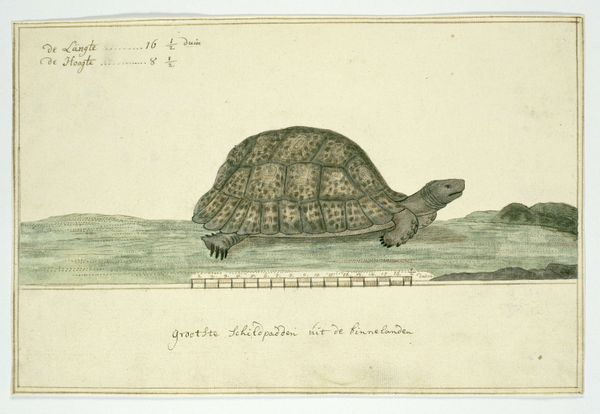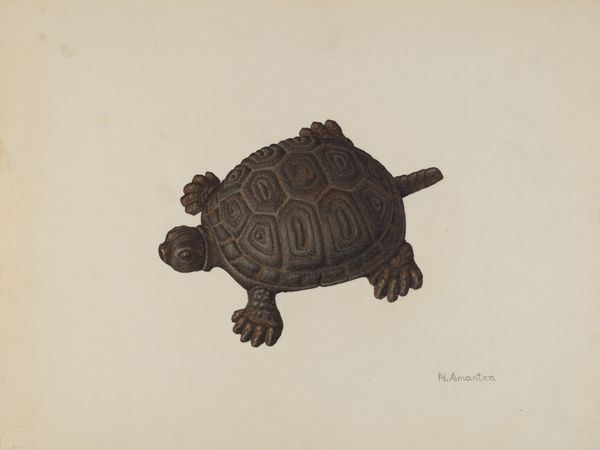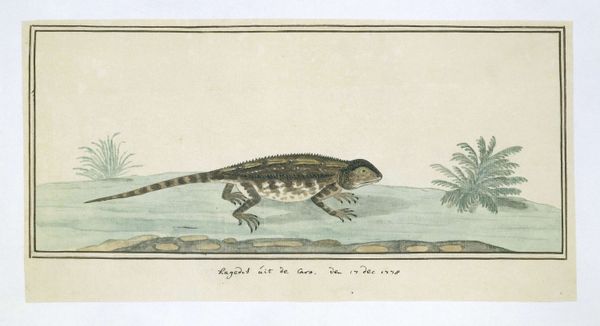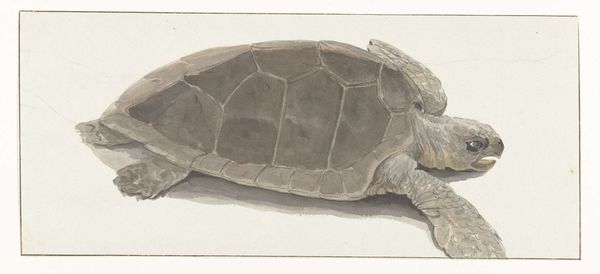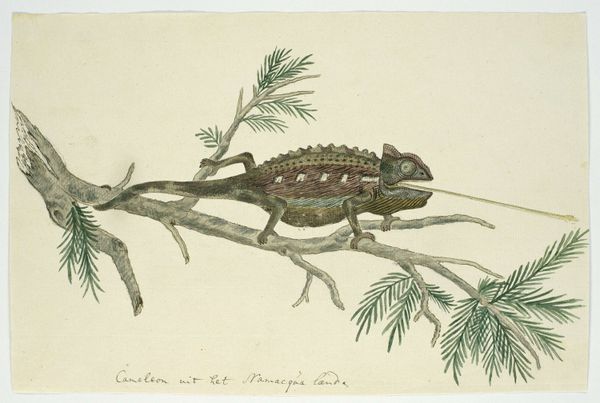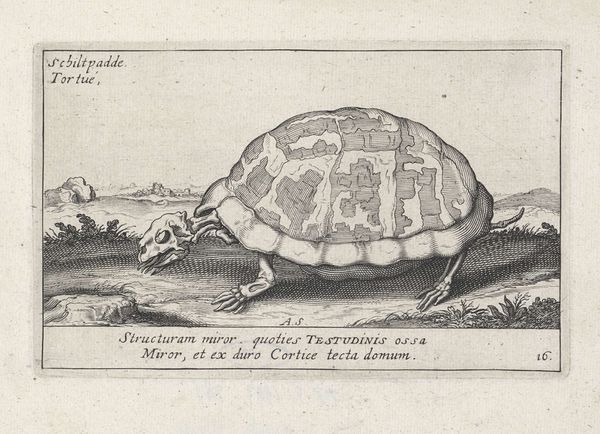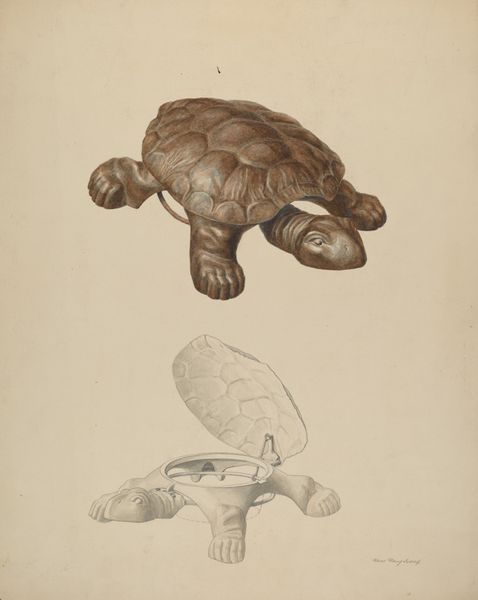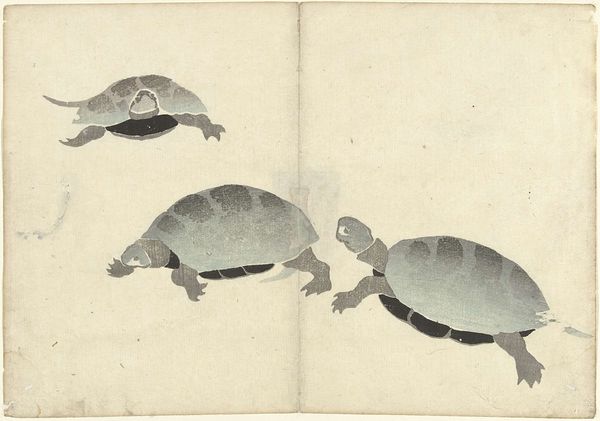
drawing, watercolor
#
drawing
#
animal
#
watercolor
#
watercolour illustration
#
watercolor
Dimensions: height 660 mm, width 480 mm, height 173 mm, width 342 mm, height 144 mm, width 305 mm
Copyright: Rijks Museum: Open Domain
Curator: Here we have a watercolour drawing attributed to Robert Jacob Gordon, likely made between 1777 and 1786. It depicts a Psammobates tentorius, commonly known as the Tent tortoise. Editor: It's remarkably delicate. The colours are so muted, almost ghostly, but the patterning on the shell pops right out. It feels like looking at a dream, not a scientific record. Curator: Well, these detailed studies were indeed part of Gordon's broader documentation of the natural world. He served the Dutch East India Company. So this tortoise is less a "dream" and more an exercise in colonial knowledge-gathering, a practice often underpinned by power dynamics. Editor: Of course. But does appreciating the inherent colonial context diminish its artistic quality? The rendering is beautiful; the meticulous detail on each scute of the shell suggests fascination. I also wonder how Indigenous perspectives figured, or were omitted, in these supposedly objective depictions. Curator: Absolutely, one must approach these historical documents with critical awareness. We see an "objective" European gaze classifying and claiming authority. These depictions contributed to the Western scientific archive, often marginalizing local ecological knowledges. The tortoise becomes a specimen, dislocated from its habitat and broader significance. Editor: And looking at its gaze, there is some degree of alertness and vitality. It almost seems posed for the painting, challenging how specimens are historically perceived. How do we confront this history responsibly? Curator: A good point. It’s our responsibility to confront this artwork while remembering this act of representing a local species. We do that by emphasizing its relationship with systems of resource management in the colonial world and allowing new perspectives. Editor: Precisely. Let's ensure the story of Psammobates tentorius extends beyond its artistic merit. This image should provoke important reflection about knowledge, authority, and environmental accountability.
Comments
No comments
Be the first to comment and join the conversation on the ultimate creative platform.
